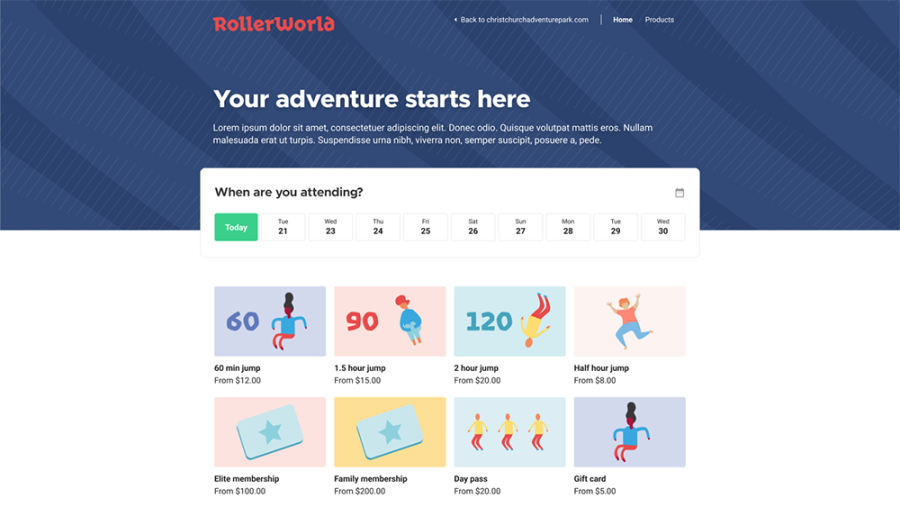IT Solutions for Better Financial Performance
With shifting strategies and priorities spurred by the pandemic, many businesses have taken the past two years as an opportunity to reset and delve into what works and what doesn’t. Among these categories is financial performance. Companies have found success by implementing new information technology (IT) solutions that can automate and integrate operations to reduce costs, boost profits, and enhance guest satisfaction. Convious and Roller are two such providers of these solutions, and both shared their insights with Funworld on e-commerce, artificial intelligence (AI), online bookings, and IT considerations.
The Power of e-Commerce in the Guest and Employee Experience
Convious is an end-to-end management platform that tackles customer sales and service before, during, and after visits.
“With our solution, attractions can handle everything from advertising, ticketing, upselling, and communication with their visitors during the visit,” says Convious Content Manager Anne-Clémence Lauth.
Convious’ model harnesses the power of e-commerce to aid attractions, as illustrated by its “e-commerce maturity model” infographic.

The more a client implements IT solutions such as online sales and marketing, data-driven decisions, automation, and advanced AI-based “bots” into their customer service process, the more operationally and financially efficient they can become.
“By gathering, processing, and drawing conclusions from data, and making the findings actionable, Convious can automate manual tasks, thereby delivering better results, as well as a better experience for both visitors and attractions.” Lauth says. “We can really remove a lot of frustration.”
Roller is a cloud-based sales solution that integrates ticket sales, group bookings, and self-serve in-park kiosks onto a single platform.
“The Roller platform gives you everything you need to sell complex booking arrangements online such as general and session tickets, party packages, and memberships; serve your guests via point of sale for in-venue check-ins or purchasing of products and food/beverage; market to guests using discount codes and channel management; and manage your venues using centralized customer resource management, guest sentiment analysis, capacity, reporting, and inventory management,” says Megan Harr, Roller’s vice president of demand generation.

The payoff: “Many of our customers have seen a 25% increase in online sales since moving to Roller, a 90%-plus reduction in reporting time (from two days to one-and-a-half hours), savings of 15 minutes for each booking change, and a massive 65% improvement in their guest satisfaction for some venues,” Harr says.
Five Steps to Selecting the Right IT Solution
Once an organization has decided to implement an IT solution to manage financial performance, here are some steps to get started.
Step 1: Using input from across the attraction, determine operational pain points that could be costing unnecessary time and money. One clue is to look for areas that could be automated but aren’t yet, such as admissions, ticketing, and reservations.
“Consult your team and put together a list of your requirements focusing on the tasks that they spend most of their time trying to get done each day or week,” says Harr.
Conversely, identify those areas that are already running efficiently and cost-effectively to keep them in place.
Step 2: Compile results and learnings into a list for prospective vendors. This list will tell them what problems need to be solved to improve financial performance. Their IT solution responses to identified problems—and any lack of them—will help assess the best fix for the business.
Step 3: When reviewing IT solutions from vendors, be firm about insisting on clear, concise fixes for issues.
“Ask them as many questions as possible about the integration and the time it would take,” Lauth recommends. “At Convious, we make it a point of honor to always be 100% transparent with our partners and prospects.”

Step 4: Verify the preferred providers’ reputations with solid reviews and referrals from satisfied customers.
“Any reputable software provider will make their uptime public, have independent security and performance reviews by third parties such as AWS solutions architects, and will be PCI DSS SAQ-A compliant,” says Harr.
Step 5: Be sure to factor in staff training, a transition period, and backup systems during that changeover to ensure a smooth adoption of the new IT solution.
“Be transparent and open with your staff, involve them in the process early and often, and make the investment in understanding and utilizing the full capability of the platform,” says Harr.
At the same time, make sure the chosen vendor is committed to making the transition quickly. At Convious, for example, Lauth says, “we implement the solution within a matter of days, and we educate our partners to use this solution easily within the first day.”
